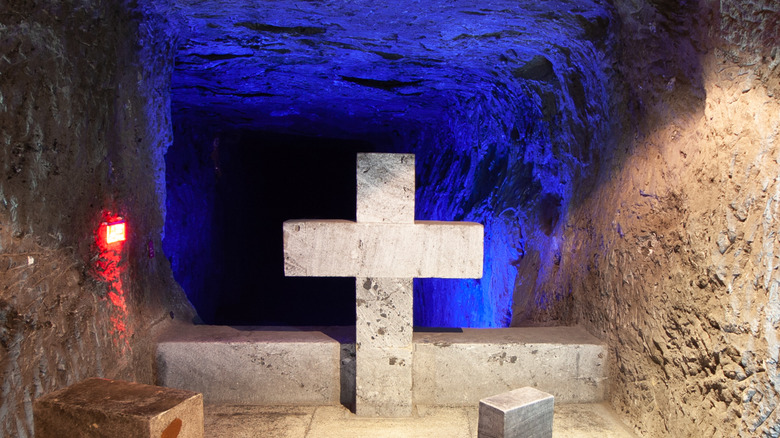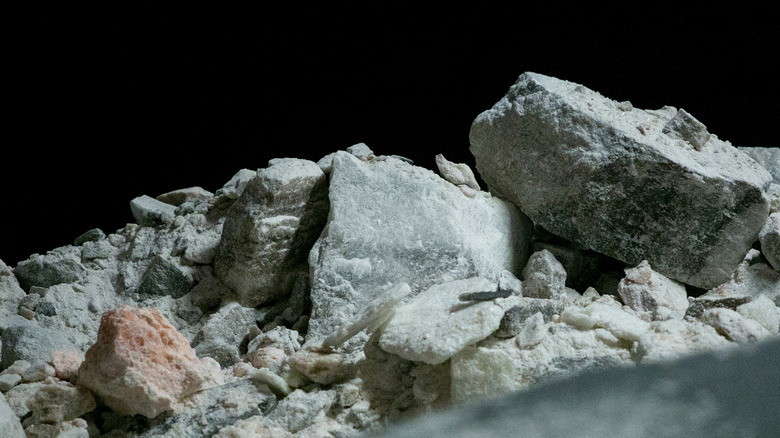The Truth About This Breathtaking Underground Salt Cathedral
Located in Colombia, the underground salt caves of Zipaquirá are home to an entire church, complete with holy statues and a functioning worship area. Worshipers from around the globe regularly fill the pews for celebration of Catholic Masses (via NPR). But there is more than what meets the eye in the country's only underground Salt Cathedral.
Called the "First Wonder of Colombia" by the Colombian Congress, the Salt Cathedral is roughly 590 feet underground (via NPR). As the destination gathers tourists and locals alike, people enjoy biking underground on Sunday mornings, and pets are now allowed to visit too. The Salt Cathedral of Zipaquirá is a very popular tourist attraction — it drew roughly 600,000 people per year, as of 2019. There are tours throughout the vast network of mines left behind by the original salt miners. But the most popular time of year for the Salt Cathedral is Easter, reports NPR, when thousands of people visit the holy site to worship together.
The reason for the new cathedral
According to National Parks Worldwide, the first mines were formed by Muisca Indians beginning in the 5th century B.C. Then, commercial mining started in the early 1800s, leaving miles of winding pathways throughout the underground space. According to NPR, miners removed millions of tons of rock salt. They carved out a cathedral in the salt mines, which was a sacred place for their daily prayers. It was expanded in the 1950s, and Colombia declared it an official church in 1953 (via NPR).
Then in 1991, a second construction and expansion project began on a new cathedral, due to safety concerns and structural problems, reports National Parks Worldwide. This Cathedral was built over a span of four years, and added in rooms representing the stations of the cross. Visitors can now walk through 14 rooms containing crosses, which are illuminated with colorful lights.
The Salt Cathedral currently offers walking tours of the miners' route, or view the water mirror on a different pathway, according to Catedral de Sal. There are three worship spaces, or naves, of the church, each with seating for religious services (via Smithsonian Magazine). Visitors love the salt sculptures that were created depicting the Stations of the Cross, the Archangel Gabriel, Jesus, and other religious figures. Since the addition of the extra rooms and sculptures, the Salt Cathedral remains a major Colombian landmark.

